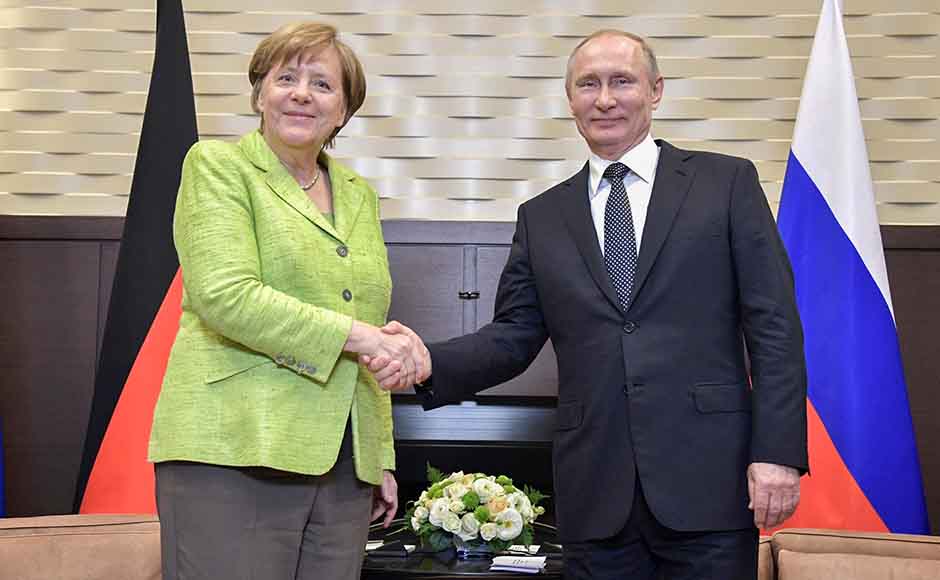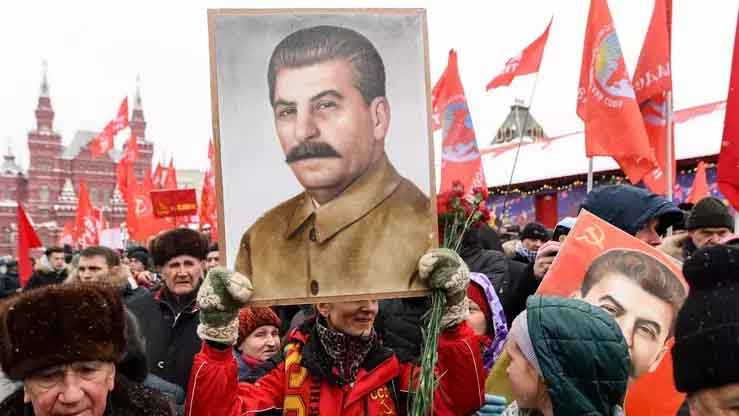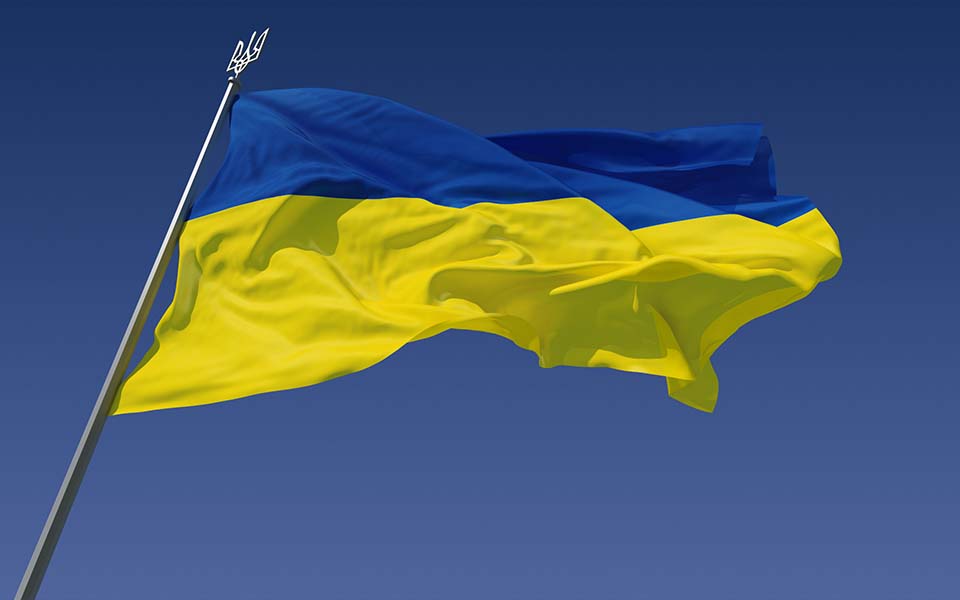We have become a NATO frontier that is directly threatened by war. We accepted over 1 million refugees from Ukraine. We are sending humanitarian and military aid to Ukraine. All over the world, Poles take action to support Ukraine and to encourage humanitarian aid to Ukraine. It is us, who risk the lives of our citizens, surrounded — on the one hand — by the Kaliningrad Fortress, on the other — Belarus, and maybe even pro-Russian Ukraine in the future, if it collapses, due to it not having been helped enough.
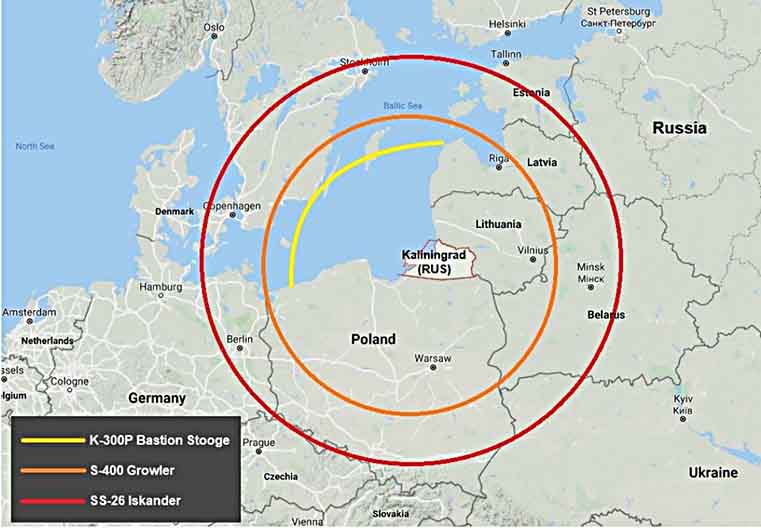
Kaliningrad's "bubble" of blocking access to the area (A2 / AD) (Source: The Jamestown Foundation)
If Poland were to join the war, the range of the "Iskander" missiles would cover all of Poland, Berlin, Copenhagen and Stockholm. "Iskander" can carry, among others, nuclear and thermobaric warheads. A large part of the country is covered by the S-400 system that blocks aviation activities. This article should make us aware of the dangers and threats to Poland and the Baltic countries resulting from the proximity.
The most strategically dangerous area for NATO is the Suwałki Passage, or the Suwałki Corridor — a term present in NATO's nomenclature, meaning the territory of Poland located around Suwałki, Augustów and Sejny, which at the same time connects the territory of the Baltic states with Poland and the rest of NATO countries, and separates Russia's Kaliningrad Region (Kaliningrad Oblast, Russian: калинингра́дская о́бласть) from Belarus, an ally of Russia.

The Polish-Lithuanian border — Suwałki isthmus (Source: Wikipedia)
According to the United States Army, the region is one of the potential hotspots in Europe. The information was confirmed during the CEPA Forum 2015 conference by the Commander-in-Chief of the US Army Europe, General Frederick Benjamin Hodges.
US representatives point to infrastructural and organizational shortcomings that prevent NATO countries from reacting quickly enough in the event of a threat to this area in the event of an escalation of a potential conflict with NATO countries, and cite intelligence information indicating that Russians and Belarusians show interest in this area.
The Military Aspect
The Kaliningrad region is the most militarized area of the Russian Federation. It contains the largest concentration of military facilities in Europe. Military bases are located throughout the Kaliningrad Region. The Kaliningrad Region is the base of the Baltic Fleet, the commander of which also acts as the head of all military units in the region, commanding the Kaliningrad Defense Region. This is a real depot of military equipment.
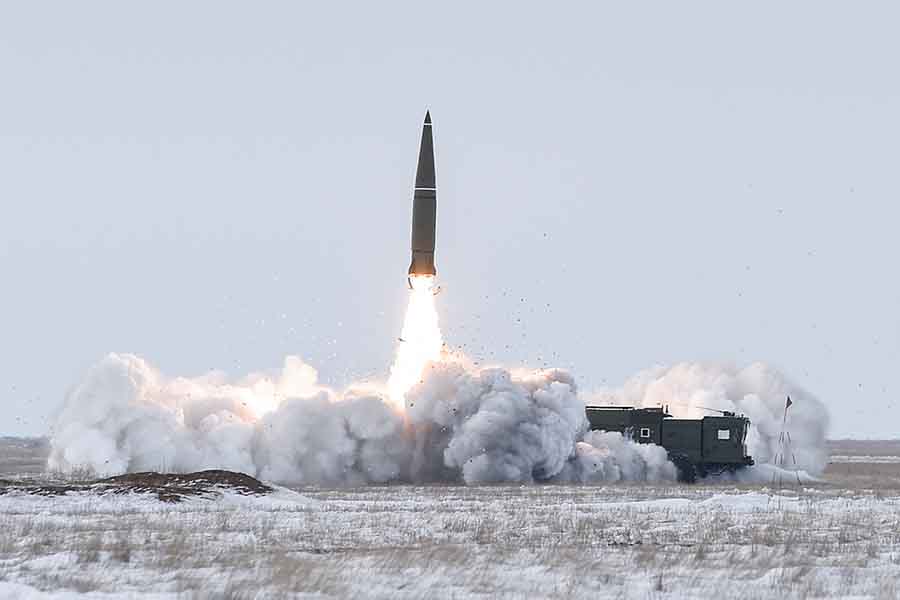
A launch of an "Iskander" rocket in 2018 (Source: Wikipedia)
The Baltic Fleet is stationed in Bałtiysk with nearly four thousand sailors and 50 ships. Apart from the sailors, at least 20,000 more soldiers are stationed in the region (this is an estimate, as eight years ago Russia suspended unilaterally the agreement with NATO's Lithuania on mutual inspection of military movements).
This, of course, is not all. Near Pionierskij, there is a radar station that controls the air space not only over the Baltic Sea and Northern Europe, but actually the entire area between the Azores and Greenland.
There are also S-200 and S-400 air defense missile complexes in the Kaliningrad region with a range of nearly 500 kilometers (311 miles). According to experts of military technology, these missiles can effectively paralyze the entire airspace of Lithuania, as well as the southern areas of Latvia and the northern part of Poland.
The "Iskander" missiles that entered the region in October 2016 are even more dangerous. The "Iskanders" are capable of carrying nuclear warheads, and their maximum range is up to 700 kilometers (435 miles) (according to more modest estimates — 500 km/311 miles). Recently, even more dangerous "Iskander-K" launchers have been placed in the region — their range is 5,500 km (3,418 miles).
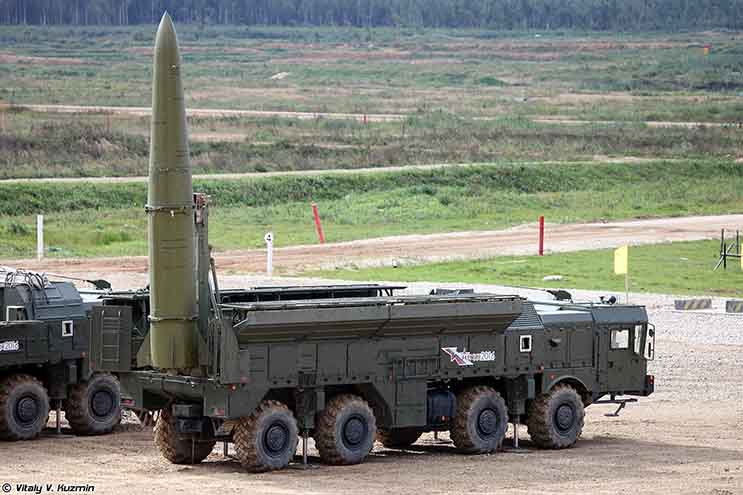
Mobile rocket launcher "Iskander" (Source: Wikipedia)
According to the Washington Post, there are also K-300P Bastion-P rocket launchers in the Russian enclave, which the Russians previously tested in Syria, using them to attack ground targets. The range of this weapon is 350 kilometers (217 miles), which is much less than that of the "Iskander".
There are also "Kalibr" rockets in the region that can reach a target 2,600 kilometers (1,616 miles) away. The 3M-54 „Kalibr” missiles are a very dangerous weapon in the Kaliningrad region, because, like the "Iskanders", they can be equipped with nuclear warheads. In the event of an armed conflict, they could reach every region of Poland.
There are also Orlan-10 drones in the region. These are not only reconnaissance tools, but they can also serve as offensive support through the ability to guide other means of destruction.
What about the defense systems? There is a new Russian anti-aircraft and anti-missile system S-400 "Triumph" in the region, which is able to shoot down anything that is in the air within the range of 400 km (249 miles).
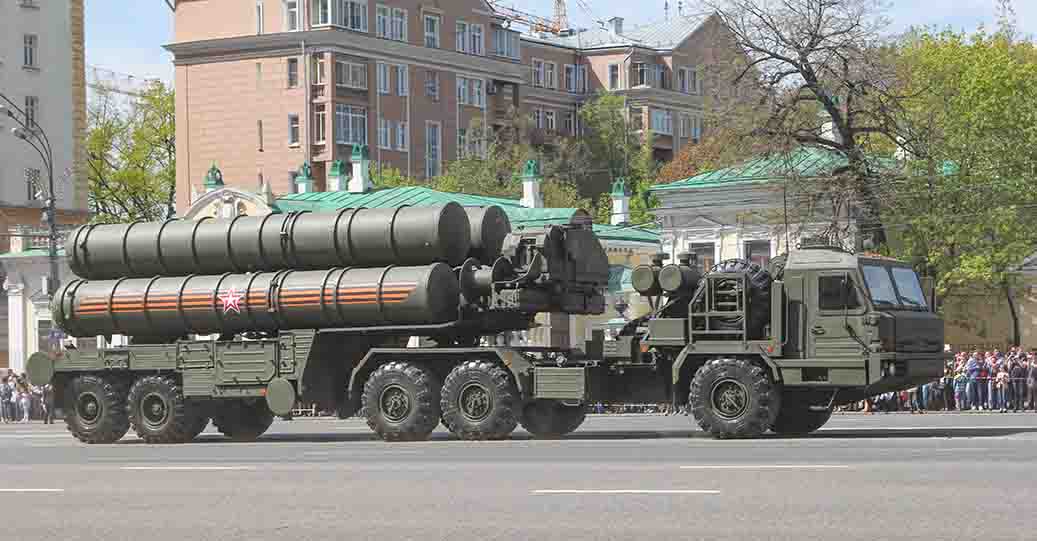
Air defense system S-400 "Triumph" (Source: Wikipedia)
The Kaliningrad region also has armored forces, which are still being strengthened. The 11th Independent Armored Regiment in Gusiewo, 79th Guards Mechanized Brigade and the Independent Guards Mechanized Regiment of Coastal Defense have recently been equipped with the latest generation T-72B3M tanks.
Geographical and historical aspect
The Kaliningrad region is an area on the Baltic Sea, covering 15,096 km² (5,829 sq. Miles) including approximately 2,000 km² (772 sq. Miles) of sea bays. It borders with Poland and Lithuania. It is the westernmost region of Russia, with no land connection with the main part of the Russian state.
Until the Middle Ages, this area was inhabited by the Baltic Prussians, who were conquered by the Teutonic Knights in the 13th century. Until the 16th century, the area of today's Kaliningrad region was inhabited mostly by the German population. The largest center of this region was the city of Królewiec, founded in 1255 by the Teutonic Knights and named after the Czech king Přemysl Otakar II, who led the Teutonic army in the expedition against Prussia.
From the victory of Poland in the Thirteen Years' War (1456), this area was under Polish sovereignty. From the time of the secularization of Prussia, after the tribute that prince Albrecht Hohenzollern paid to the Polish king Sigismund the Old in 1525, Królewiec became one of the main centers of Polish Protestantism and a thriving center of Polish printing industry. In 1560, after the Polish king Sigismund II Augustus granted privileges to the Albrecht University (the second oldest university in the Republic of Poland after the Krakow Academy), Królewiec also became one of the leading Polish university centers.
Poles from Prussia lived mainly in Królewiec and the southern border zone of the district. During the partitions, Królewiec and Prussia found themselves in the Prussian partition and that was the case until the end of World War II.
At the end of World War II, the Red Army occupied East Prussia. Königsberg fell after a long siege on April 9, 1945. After the war, under the Potsdam Treaty, the province of East Prussia was liquidated and its area was divided between Poland and the USSR. The Soviet Union received about 1/3 of the lands of former East Prussia.
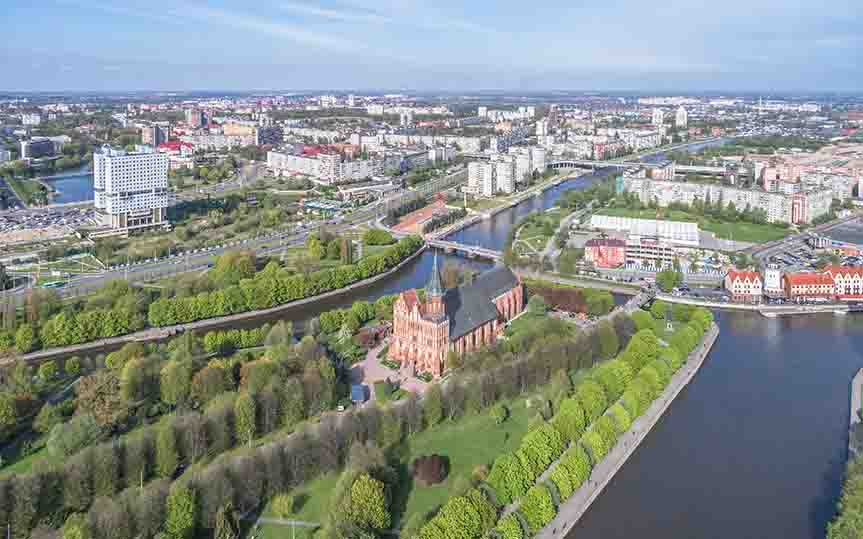
Aerial view of Kaliningrad in 2017 (Source: Wikipedia)
Immediately after the occupation of these lands by the USSR, a Special Military District was established on their territory, which also dealt with administration and civil matters. Formally, the Kaliningrad region was established on April 7, 1946 as part of the territory of the Russian Soviet Federative Socialist Republic.
On July 4, 1946 the name of the city of Królewiec was changed to Kaliningrad, giving the name in honor of Mikhail Kalinin, the chairman of the Supreme Soviet of the USSR who had died a year earlier. At the same time, the names of practically all localities in the region were changed.
By 1947, the entire German population was displaced from the region, and new settlers from various parts of the USSR, mainly Russians, arrived in their place. Due to its geographic location, the region has become one of the most militarized parts of Russia.
Unofficial data estimate the number of Poles in the Kaliningrad region at between 10 to 20 thousand. In 2012, the statistics showed 4,500 Poles in the region, and Catholic parishes estimated the number of people of Polish origin at 10-15 thousand.






